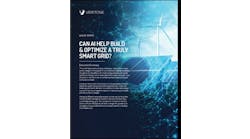Credit: Ian Prowell
A group of major utility and information technology companies are joining forces on a microgrid testbed project designed to tackle the problem of renewable energy variability.
The Industrial Internet Consortium has brought together Duke Energy, Southern California Edison, CPS Energy, Cisco, National Instruments and Real-Time Innovations to work on the project, with installations in both California and Texas. The Smart Grid Interoperability Panel (SGIP) also will participate.
Called the Communication and Control Testbed for Microgrid Applications, the project will use architectural innovation to try to overcome a major grid inefficiency: the need to install excess power capacity to compensate for renewable energy variability.
Join the discussion with microgrid leaders on our LinkedIn Group, Microgrid Knowledge.
The project envisions a re-architecting of electric power grids to include a series of grid-connected microgrids, which will control smaller areas of demand with distributed generation and energy storage.
The project will introduce real-time analytics and control to ensure that generation more accurately and reliably matches demand.
“Analytics and controls are essential for a successful energy transition, addressing limited scalability and renewables, siloed networks, rigid controls and slow human intervention,” said Kip Compton, VP/GM, Internet of Things Systems and Software Group, Cisco
The framework will be developed in three phases that will culminate in a field deployment at CPS Energy’s “Grid-of-the-Future” microgrid test area in San Antonio, Texas.
The initial phase, a proof-of-concept that ensures basic security and performance, will be conducted in Southern California Edison’s Controls Lab, beginning in April 2015. Phase Two, slated for 2016 also at the SCE lab, will demonstrate the scalability of the communication and control framework in a simulated environment. The final phase in Texas will demonstrate the testbed in a real-world situation.
“SCE’s Controls Lab houses one of the only fully simulated grid environments in North America,” said Andy Paylan, lead engineer of SCE’s Advanced Technology group. “Our labs test many grid technologies in various phases of the development cycle and it will serve the consortium well for the communication and control testbed to go through simulations in the control lab before technology is deployed on the grid.”
The testbed participants will work closely with Duke Energy, which recently published a distributed intelligence reference architecture. SGIP will help ensure a coordinated, accepted architecture, based on modern, cross-industry industrial internet technologies.
This is the first energy-focused testbed to be undertaken by the Industrial Internet Consortium.
“The smart grid is a critical infrastructure component of the Industrial Internet of Things (IIoT),” said Stan Schneider, RTI’s CEO. “The IIoT will span industries, sensor to cloud, power to factory, and road to hospital. This key first step will address a significant barrier to the efficient use of green energy.”
Track microgrid testbeds as they are announced by subscribing to our free newsletter, Microgrid Knowledge.







